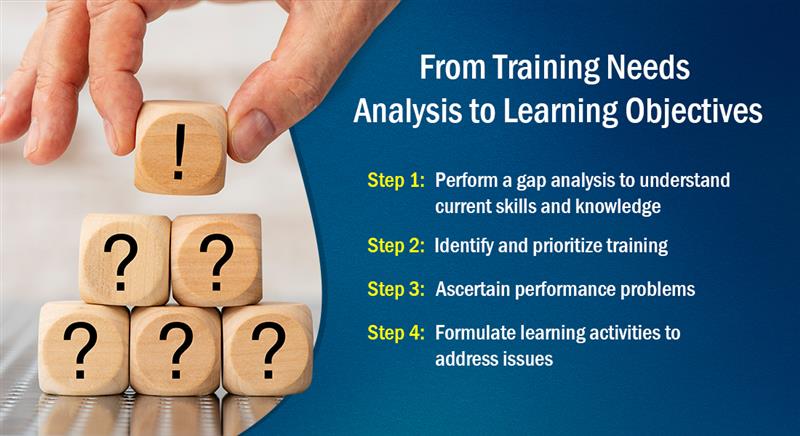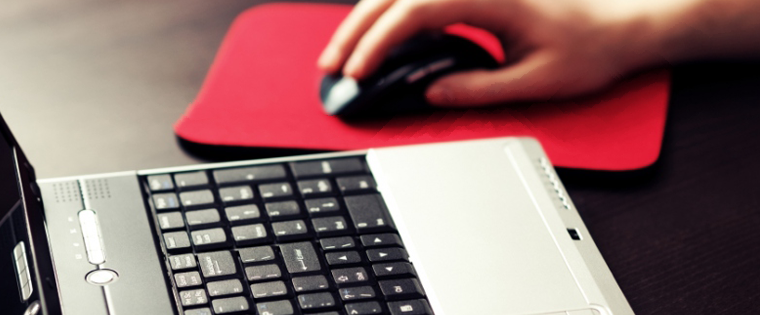10 Questions You Should Ask Yourself Before Writing Learning Objectives

Why do employees take an e-learning course or sit through a training program? The reason is pretty obvious. Their current knowledge or skills are inadequate to perform a task and therefore, the e-course or training program is expected to fill these gaps.
In Instructional design, determining the learning objectives of the course before creating the curriculum is essential to ensure the course effectively addresses these needs. According to Robert Mager, a learning objective is a statement in specific and measurable terms that describes what the learner will know, or be able to do, as a result of engaging in a learning activity.
→ Download Now: Instructional Design 101
Here are 10 questions you should ask yourself before writing the learning objectives of an e-learning course.
1. What is the broad aim of the course?
First, you need to understand the broad aim of the course. In a product training program, for example, the aim of the course would be to provide adequate knowledge about a product so that all customer queries are effectively addressed.
2. Who are the target audience of the course?
It is one of the important steps in the development of learning objectives for an e-learning course. You need to know your audience well. Who would be taking the course? Is it just the sales team or even the service personnel, support staff, and end-users? Audience analysis is a critical aspect of instructional design principles.
3. How would each of the target group benefit from the course?
The sales staff might get a better understanding of the product and will be better equipped to convince potential customers. The service personnel, on the other hand, might troubleshoot and resolve customer issues efficiently. If it is the end user of the product who is taking the course, he/she might want to understand how one can maximize the use of the product.
4. What are the performance goals for each of the target audience?
How does the knowledge help improve performance? The product training might help in increased sales, lower turnaround time for service queries, or less queries from customers seeking help in product usage.
5. What is the knowledge the learner gains from the course?
Typically, action verbs such as cite, list, name, recognize, define would be ideal to state the learning objectives. Examples of learning objectives can be – Recognize the different parts of a product, list three benefits of the product, and so on.

Instructional Design 101
A Handy Reference Guide for eLearning Designers
- eLearning standards
- Streamlined instructional design process
- Effective assessments
- And More!
6. What is the essential information learners should comprehend?
Learners should be able to interpret and analyze information in a way that has relevance to their job. Learning objectives can be written using verbs such as describe, distinguish, summarize, illustrate, convert, etc.
7. How can employees apply the knowledge gained in trainings to their job situations?
Once learners make a connection between what they learn and their jobs, they should be able to successfully use that knowledge while performing their jobs. Learning objectives should indicate the same. Action verbs that would come to the rescue here would be: be able to, apply, arrange, demonstrate, solve, etc.
8. How can employees analyze the given situation and be able to make the right decision?
For example, in a safety training or a compliance training course, employees will need to analyze a given situation and interpret if it conforms to the safety/compliance norms. Instructional design strategies recommend using verbs such as analyze, associate, infer, distinguish, and determine to define these learning objectives.
Here is a table of verbs that can be used for the 6 levels of critical thinking:
| Knowledge | Comprehension | Application | Analysis | Synthesis | Evaluation |
| Define | Compare | Apply | Categorize | Combine | Compare |
| Identify | Discuss | Calculate | Analyze | Prepare | Explain |
| Describe | Explain | Prepare | Compare | Organize | Estimate |
| List | Differentiate | Operate | Explain | Create | Justify |
| Recognize | Classify | Relate | Select | Develop | Interpret |
| State | Contrast | Produce | Arrange | Design | Select |
Source: sandiego.edu
9. How can employees synthesize the information to be able to develop new ideas or practices?
Learning objectives should indicate how the course will enable employees use information while performing their jobs. For this purpose, action verbs that help create learning objective would be compile, organize, plan, propose, integrate, devise, formulate, etc.
10. Does an employee need to interpret or evaluate a given situation based on the knowledge gained in the course?
If so, you can use action verbs such as assess, compare, conclude, evaluate, justify, support, etc. to indicate this objective of the course.
Not all questions may be relevant to your course; however, they give you a head start in determining the learning objectives of the course or training program. What is important is to give a precise idea to your employees on how they are likely to benefit from the e-learning course.
What are the methods you follow to determine the learning objectives of an e-learning course? Do share the methods you follow.






![Setting Clear Objectives and Goals for LMS Usage [Infographic]](https://blog.commlabindia.com/hubfs/blogs/setting-clear-objectives-lms-usage-infographic.jpg)